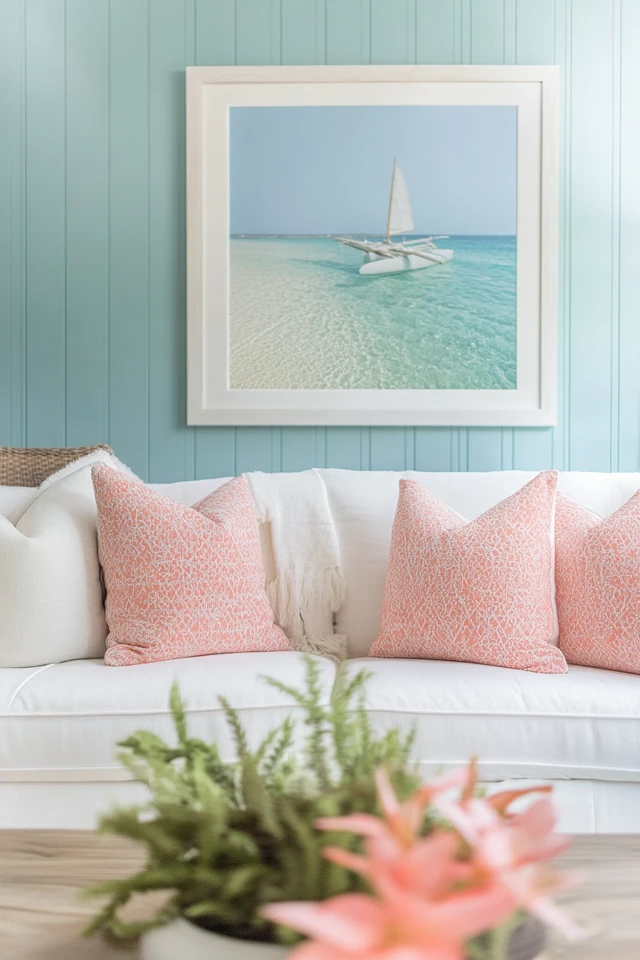The perfect coastal living room begins with the right color palette. Coastal design is known for its soothing, ocean-inspired hues, but it’s not limited to just blue and white. Modern coastal palettes incorporate a variety of soft, natural tones, giving you endless ways to create a serene and inviting space that feels like a seaside retreat.
When I redesigned my own living room with a coastal theme, I quickly learned that the right colors could completely transform the space. Soft blues evoked the calmness of the ocean, sandy beiges brought warmth, and crisp whites tied it all together. With just a few color updates, my living room went from bland to blissful.
In this guide, I’ll share some of the most stunning coastal living room color palettes to inspire your next design project.
1. Classic Blue and White
Why It Works
Blue and white are timeless coastal colors, inspired by the ocean and the sky. This palette creates a crisp, clean, and airy feel.
How to Use It
- Paint walls white or light blue for a fresh backdrop.
- Add navy or denim blue accents through throw pillows, rugs, or artwork.
- Use white or natural wood furniture to keep the look bright and breezy.
Example:
Pair a white slipcovered sofa with navy striped pillows and a woven jute rug for a nautical-inspired space.
2. Seafoam Green and Soft Beige
Why It Works
Seafoam green reflects the calmness of shallow ocean waters, while beige mirrors the sandy shore, creating a balanced and tranquil vibe.
How to Use It
- Choose seafoam green for accent walls or large furniture pieces.
- Use beige for area rugs, curtains, or throw blankets.
- Add white accents to keep the palette light and fresh.
Styling Tip:
Incorporate natural materials, like a light wood coffee table or a rattan pendant light, to enhance the organic feel.
3. Warm Sand and Driftwood Gray
Why It Works
This palette combines warm sandy tones with soft gray, evoking driftwood on the shore. It’s understated and works well in both modern and traditional designs.
How to Use It
- Use sandy beige as the main color for walls or larger furniture.
- Add gray through accent chairs, side tables, or patterned rugs.
- Incorporate natural wood finishes to tie the palette together.
Example:
A beige sofa paired with a gray ottoman and wooden end tables creates a cozy, coastal-inspired living room.
Picture Gallery

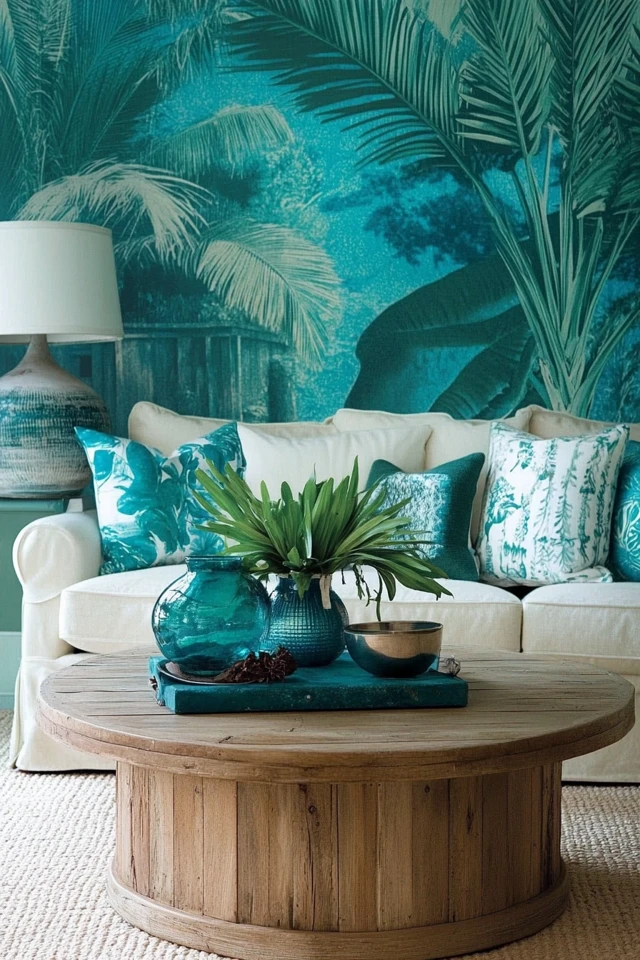

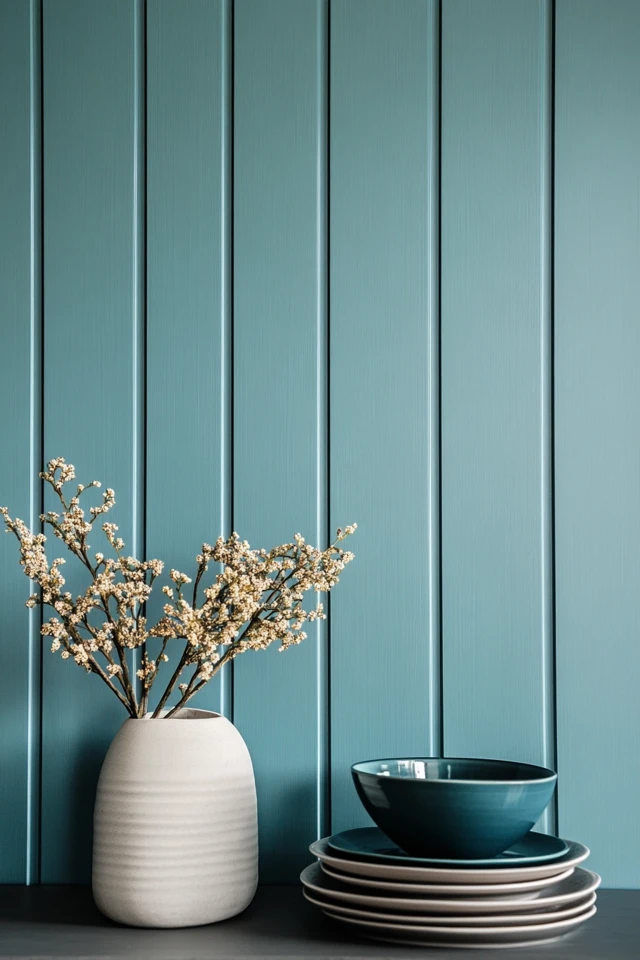
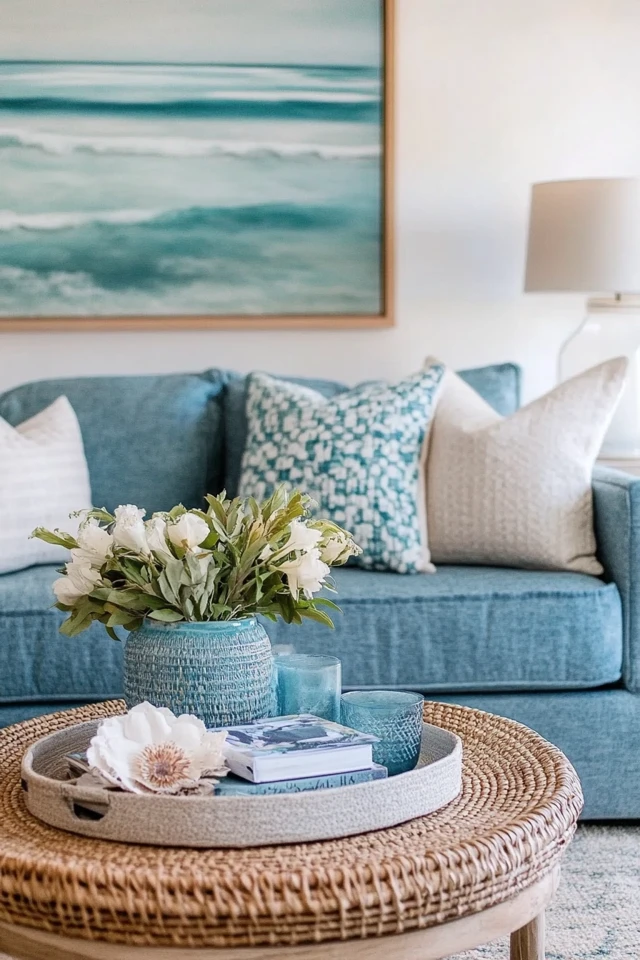
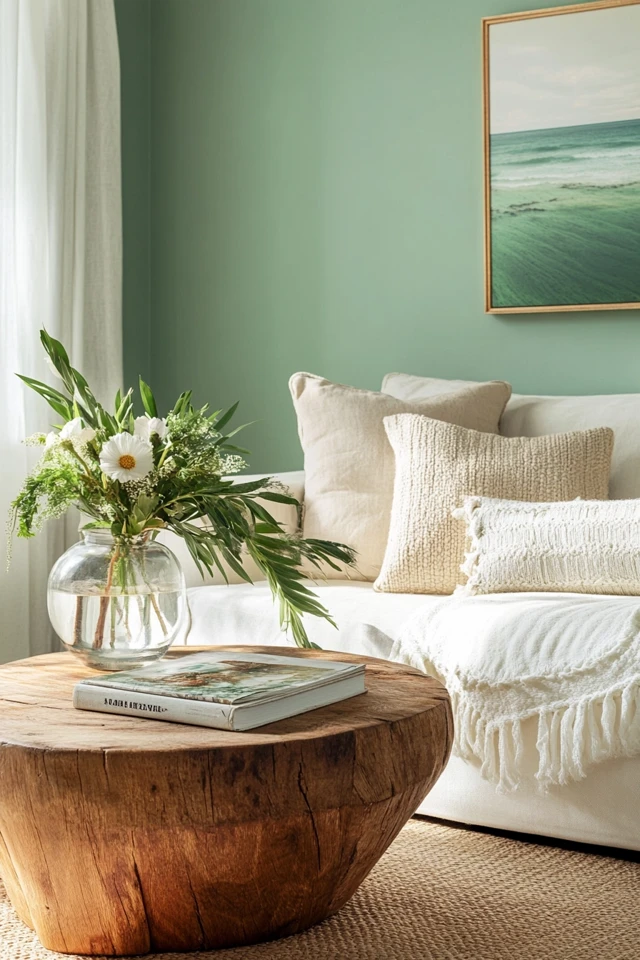
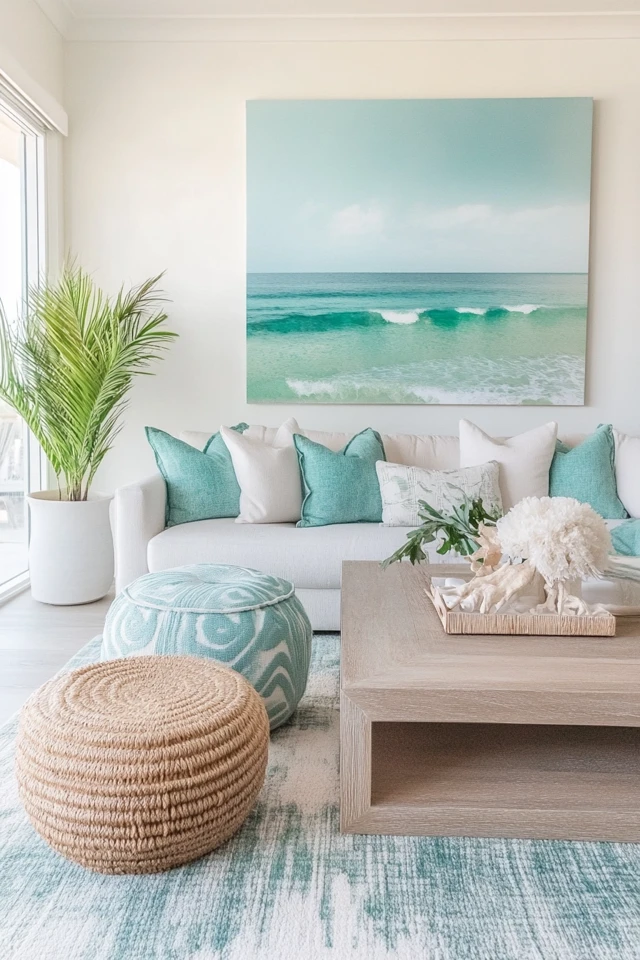
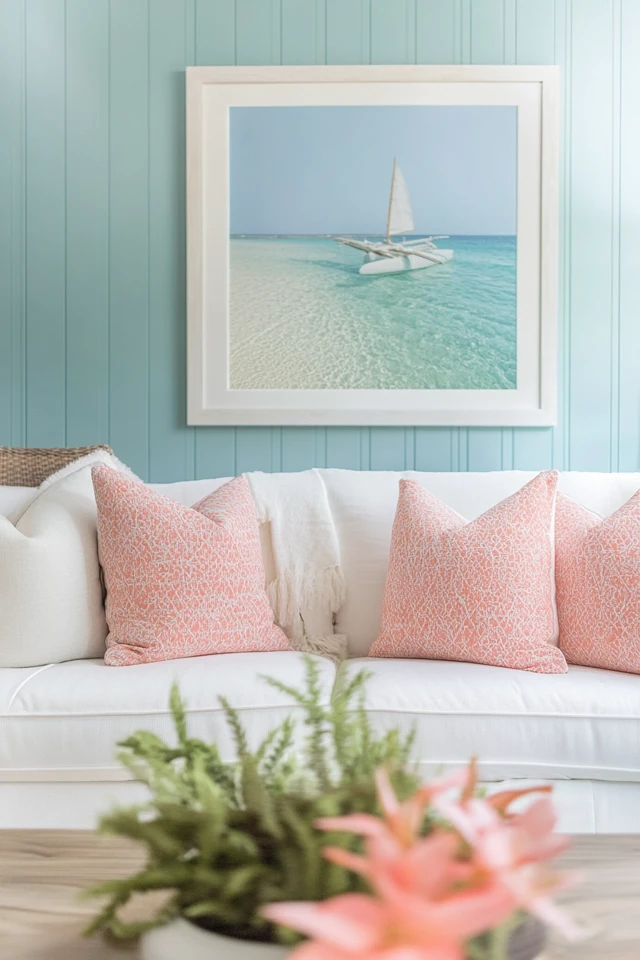
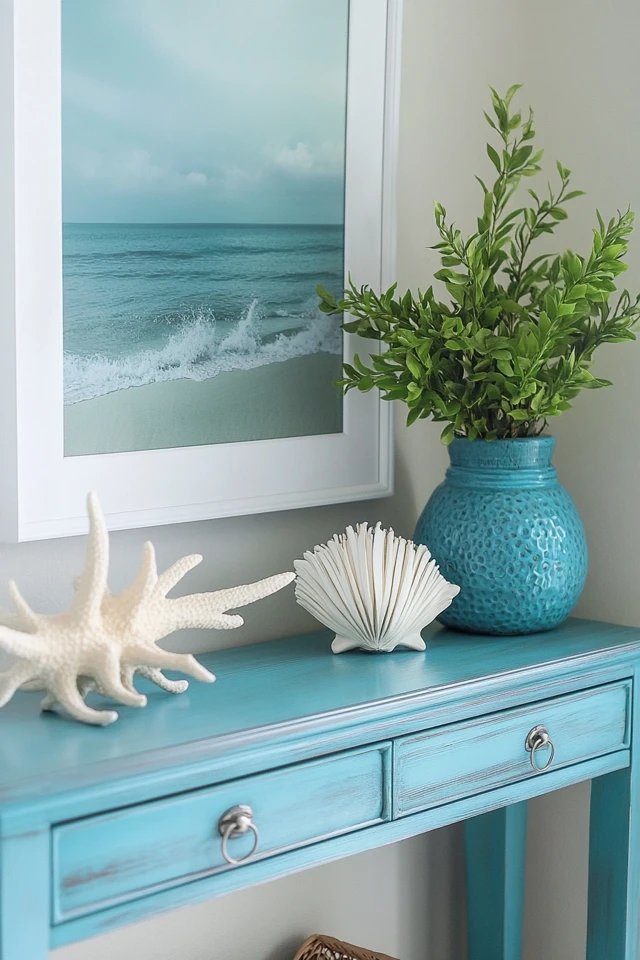
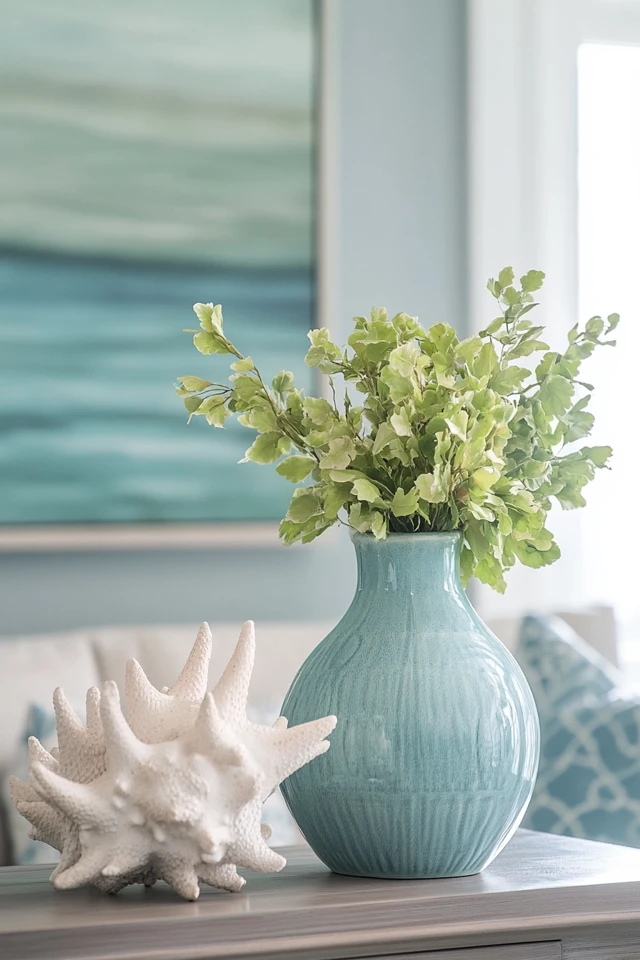
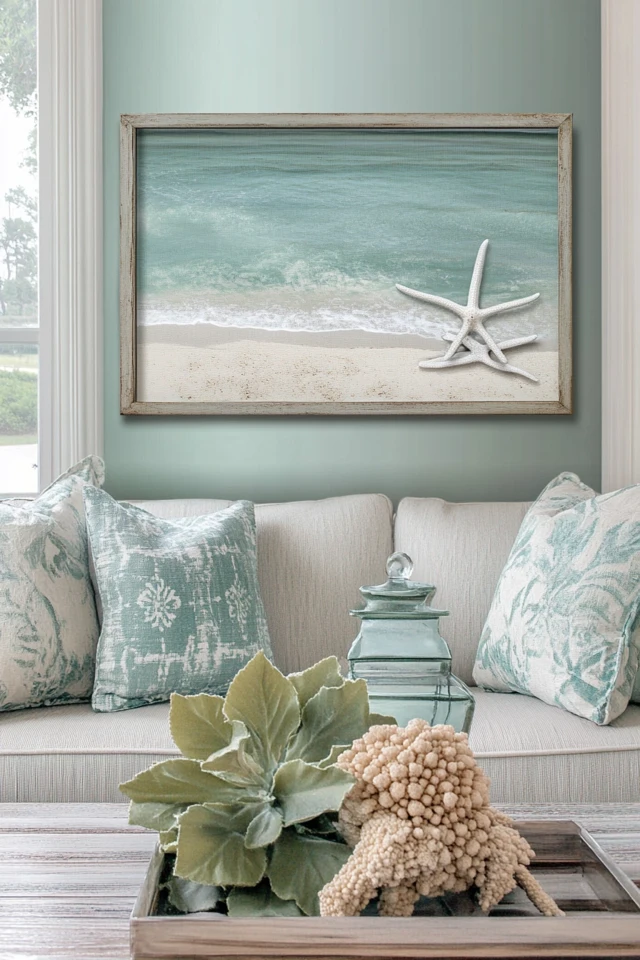
4. Aquamarine and White
Why It Works
Aquamarine is a brighter, more playful take on traditional coastal blues, adding energy and vibrancy to your space.
How to Use It
- Paint one accent wall in aquamarine to make a bold statement.
- Use white furniture and decor to balance the bright color.
- Add subtle texture with woven or linen accents.
Styling Tip:
Incorporate glass decor, like vases or candleholders, to reflect light and enhance the airy feel.
5. Navy Blue, Gray, and White
Why It Works
This palette offers a more dramatic take on coastal design, perfect for creating a cozy and sophisticated living room.
How to Use It
- Use navy as the dominant color through walls or a statement sofa.
- Balance it with soft gray rugs or curtains.
- Add white accents, such as a coffee table or decor pieces, to brighten the space.
Example:
A navy accent wall with gray furniture and white throw pillows exudes modern coastal charm.
6. Coral and Aqua
Why It Works
This vibrant palette mimics tropical sunsets and turquoise waters, bringing warmth and energy to your living room.
How to Use It
- Use aqua for larger elements, like walls or rugs.
- Add coral accents through throw pillows, artwork, or vases.
- Balance the bold colors with neutral furniture in white or light wood.
Styling Tip:
Layer textured pillows and woven decor for a casual, beachy look.
7. Soft Blue, Taupe, and White
Why It Works
This subtle combination creates a serene, elegant coastal living room that’s timeless and versatile.
How to Use It
- Choose soft blue for walls or larger upholstery pieces.
- Use taupe for area rugs or side chairs.
- Add white furniture and decor for a clean, cohesive look.
Example:
A soft blue armchair paired with a taupe area rug and white side tables creates a serene, layered look.
8. Blush Pink and Sandy Beige
Why It Works
Blush pink brings a unique, feminine twist to coastal design, while sandy beige keeps the look grounded and warm.
How to Use It
- Use blush pink as a subtle accent color in textiles or artwork.
- Opt for sandy beige walls or upholstery to create a neutral base.
- Add white and light wood accents for a cohesive finish.
Styling Tip:
Incorporate seashell-inspired decor to tie the blush pink into the coastal theme.
9. Turquoise and White
Why It Works
Turquoise is a bold, cheerful color that captures the vibrant energy of tropical waters.
How to Use It
- Use turquoise sparingly for a dramatic pop of color, like in throw pillows or a statement chair.
- Pair it with crisp white walls and furniture for balance.
- Add natural textures like wicker or bamboo to complete the look.
Example:
A turquoise ottoman paired with a white sofa and rattan accents creates a fresh, lively coastal vibe.
10. Sage Green and Light Gray
Why It Works
Sage green brings a touch of earthiness to coastal design, while light gray keeps the palette cool and sophisticated.
How to Use It
- Use sage green for accent furniture or textiles, like curtains or pillows.
- Pair it with light gray walls or rugs for a balanced look.
- Add white and natural wood elements to tie everything together.
Styling Tip:
Incorporate potted plants to enhance the organic feel of the sage green.
How to Choose the Right Palette
- Consider Your Space: Use lighter palettes for smaller rooms to make them feel open and airy.
- Think About Mood: Choose blues and whites for a classic, calming vibe or corals and aquas for energy and warmth.
- Complement Existing Furniture: Match your palette to the tones of your furniture or flooring for a cohesive look.
- Experiment with Swatches: Test paint and fabric swatches to see how colors look in different lighting.
- Keep It Balanced: Mix bold colors with neutrals to avoid overwhelming the space.
Conclusion
A well-chosen color palette is the foundation of a stunning coastal living room. Whether you prefer the classic pairing of blue and white, the elegance of sandy tones, or the vibrancy of coral and aqua, there’s a palette to suit every style.
When I revamped my living room with a seafoam green and beige palette, the transformation was incredible. The space felt brighter, calmer, and more inviting—like a personal oasis.
Now it’s your turn! Use these color palette ideas to create a coastal living room that reflects your style and transports you to the beach, no matter where you are.
FAQ
Can I mix multiple coastal palettes in one room?
Yes! Just make sure the colors complement each other. For example, pair blue and white with sandy beige for added depth.
What’s the best palette for a small living room?
Stick to lighter colors like white, seafoam green, and soft blue to make the space feel larger and more open.
How can I add bold colors without overwhelming the room?
Use bold hues sparingly, like in accent pillows, artwork, or small decor pieces, and balance them with neutral tones.
Can coastal palettes work in rooms without much natural light?
Absolutely! Opt for brighter whites and soft pastels to make the room feel light and airy, even without abundant natural light.
How can I make a coastal palette feel more modern?
Incorporate sleek furniture with clean lines and pair traditional coastal colors with metallic accents like brushed brass or chrome.

